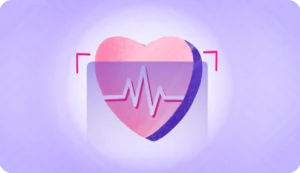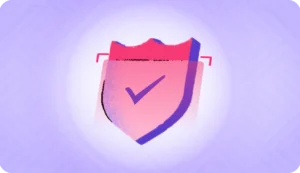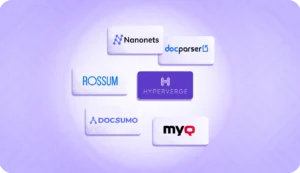Many healthcare organizations and government departments struggle with patient health records, consent forms, and insurance documentation. Additionally, they must guarantee the security and confidentiality of patient data. Saving and organizing the data is a priority.
As a result, healthcare organizations require a solution with a robust system to manage patient data and current, effective modern methods due to the increasing digitalization. It could take a long time to enter data by hand, and it might result in several types of data inaccuracies. OCR (Optical character recognition) is a technology that completes the data input more quickly and accurately.
This comprehensive article will help you understand the importance and benefits of OCR in the healthcare industry and guide you in choosing the best OCR solution for your organization.
What is OCR?
OCR technology uses software to recognize and read printed or handwritten text, converting it into digital form. Although OCR has existed for decades, recent improvements in artificial intelligence and machine learning have made it more accurate and reliable. OCR is especially useful in the healthcare industry, where many paper-based documents need to be digitized and stored in Electronic Health Records (EHRs).
The main advantage of OCR is that it reduces errors and improves data entry accuracy for human services. Manual data entry is prone to mistakes, which can have grave implications in healthcare. OCR automates this process, reducing human error.
OCR also speeds up data entry. Manual entry can be slow, especially with large volumes of data. OCR automates this, making it faster and more efficient, thus boosting productivity and allowing healthcare staff to focus on patient care.
Additionally, OCR improves data security and privacy-protected health information. OCR ensures accurate and secure entry into EHRs, reducing the risk of data security breaches.
There are various OCR systems available, each with different strengths. Some are designed for specific documents like medical records or prescription labels, while others are general-purpose. Some are better at reading handwriting, others at printed text. Healthcare organizations should choose an OCR system based on their needs, considering factors like accuracy, speed, and cost.
Working of OCR in healthcare
Here’s a detailed explanation of how OCR works in healthcare:
Data capture: Data capture is the initial step where physical documents from patients, such as medical records, prescription labels, and patient consent forms, are collected. These documents may include both printed and handwritten text.
Scanning and data extraction: The initial stage of OCR involves scanning the paper document or image using a scanner or camera and converting it into formats like JPG, PNG, or PDF. Following this, data extraction occurs, where the OCR software analyzes the scanned image to identify text-containing areas, segmenting them into characters, words, and lines.
Subsequently, the pre-processing step improves image quality by eliminating noise, rectifying perspective distortions, and fine-tuning brightness and contrast levels.
Character recognition: The OCR system first identifies text-containing regions within the image, isolating them from the surrounding content. It then proceeds to analyze each character within these regions, identifying the associated letter or number. This process relies on complex algorithms and machine learning methods to ensure accurate character recognition.
Data integration and classification: Data integration involves mapping the recognized text into structured data formats. This step ensures the extracted information fits into the required fields in electronic health records (EHRs) or other databases.
Classification is about categorizing the extracted data according to its type or relevance. For example, patient names, dates of birth, and medical history details of affected individuals are categorized into corresponding fields in the EHR system.
Output: Finally, the converted and organized data gets stored in the healthcare organization or department’s database or electronic health record (EHR) system. This allows for electronic access, search, and analysis, significantly boosting the efficiency and precision of managing data in health and human services.
Looking to automate processes in healthcare?
Try Hyperverge’s OCR software for the Healthcare and Medical Sector. Schedule a DemoBenefits of using OCR in healthcare
Here are some benefits of using OCR technology in the Healthcare industry:
Improve efficiency
OCR can boost efficiency by automating tasks like data entry, record keeping, and billing. This automation reduces the time and effort needed to manage patient data, enabling healthcare providers to focus more on delivering quality patient care.
Easy management of patient data
OCR improves the management and accuracy of patient data by reducing errors from manual data entry. Additionally, OCR enhances patient safety by ensuring data is accurate and current. When extracting information from a patient’s medical history and records, OCR can help spot potential medication errors or treatment inconsistencies.
Reduce time and cost
OCR can save time and minimize costs by eliminating manual data entry and paper-based record keeping. For example, by automating insurance claims and claim processing, OCR solutions can lower the administrative expenses linked to handling claims.
Minimization of errors
We can make mistakes, especially when doing complex and demanding documentation tasks in healthcare and law. However, OCR limits the need for human involvement, which helps reduce these errors significantly.
Overall, OCR technology offers many benefits to healthcare establishments. These include increased efficiency, enhanced patient safety, reduced costs and errors, and improved analytics. By utilizing OCR technology, healthcare providers can enhance their operations and deliver better care.
Use cases of OCR in healthcare
Here is an overview of a few use cases of OCE in the healthcare industry to help you understand the importance of meaningful use of OCR technology:
Management of medical records
OCR will allow digitizing and organizing the prescription information into a dataset that can store patient name, drug, drug dosage, and drug usage. The hospital can quickly browse the files and help prevent possible errors if they arise.
Generally, OCR will cut most of the problems that would arise with any given service. This can also include paper-based records for patients, such as general information on the patient, imaging, laboratory results, and medical history, and may significantly help the hospital improve the accuracy of personal data and enable easy access for workers.
Medical billing and coding
OCR technology can automate bill and invoice processing by extracting data from invoices and matching it to the corresponding patient records. It helps healthcare establishments improve billing accuracy, ensure regulatory compliance, and reduce errors.
Additionally, OCR can automate medical coding by assigning codes to diagnoses, procedures, and treatments. This streamlines the coding process and minimizes errors for healthcare providers.
Insurance claim processing
OCR technology facilitates the processing of insurance claims by converting forms on paper into digital text, scanning and improving document images, extracting essential data such as patient information and details of the payment from the claims, validating this data, and finally integrating the data into the healthcare system.
This approach is effective in reducing errors in claims and streamlining the claims workflow, which speeds up the entire process. OCR software can be used to help healthcare providers improve the efficiency and accuracy of patient safety using automated processes while also managing paper-based patient records. In some cases, healthcare providers also rely on EMS PCR software to streamline patient care reporting and ensure accurate documentation in emergency medical situations.
Make your documentation process seamless with OCR
At Hyperverge, our OCR software is designed specifically for the healthcare industry, with special features to help. It provides high accuracy in text recognition, robust data extraction capabilities, and seamless integration with existing healthcare systems.
It can handle diverse document types and formats, ensuring comprehensive digitization of healthcare records. Our cutting-edge AI and machine learning algorithms further enhance the reliability and speed of data processing.
To explore how Hyperverge’s healthcare OCR technology can help your healthcare operations, visit Hyperverge. Ready to start? Sign up now.





